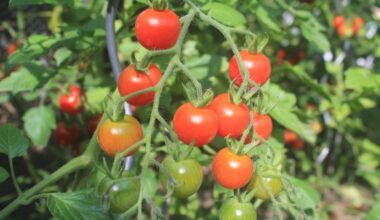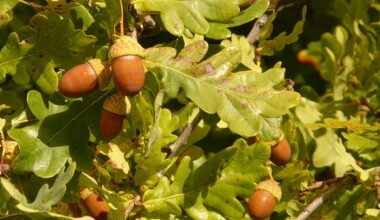During the construction phase of the house, many people have good intentions and give trees of life, shrubs and plants to the future owners of the house. To prevent these plants from shrinking, they are planted in a place where they are thought to be adaptable.
But apple trees, in particular, grow quite large over the years. The crown can be up to 10 meters wide.
When the apple tree has only been standing for three or four years, you can still consciously transplant it. However, the longer the tree is standing, the more rooted it becomes. The probability of the tree growing back to its new location is considerably lower. As with the crown, the roots grow wider and deeper over the years.
Contents
When to transplant an apple tree?
Ideally, neither the apple tree nor any tree, fruit or other tree, already installed, should be transplanted. And this, whatever the age of the subject.
It is always a risky operation for the health and the future of the tree, to which one is asked to provide again the physiological efforts already produced during its planting, in particular for its rooting.
Tools such as mini-excavators make it very easy to dig planting holes, but also give many illusions about the efficiency that can be expected from their use in terms of plant perenniality.
For a tree, transplanting is not a simple change of place. It is an uprooting, followed by a new plantation which will have physiological repercussions all the more strong and detrimental as it has been installed for a long time. Even lifted with a large root ball. This operation, when it is not possible to do otherwise, must be carried out at the end of autumn. With a pruning of the roots and branches.
Transplanting an apple tree – step-by-step instructions
The best time to replant the apple tree is in the fall. This way, the roots can get used to the new environment without being damaged by frost.
1. Expose the apple tree
Use a sharp spade to dig a trench the size of the tree top. The fine vital roots are finally outside. The depth should also be as generous as possible.
In this way, the apple tree retains all the necessary roots during the transplanting phase so that it can develop optimally in its new location.
2. Digging the planting hole
Look for a suitable location for your apple tree. A sunny location is especially important for the yield of the crop and the taste of the fruit. Therefore, dig a planting hole corresponding to the root and improve the soil with ripe compost.
3. Protect the apple tree from transport damage
To make sure nothing happens while transporting the apple tree, you must tie the tree with a rope. Tie the rope around the branches and tie it sufficiently.
4. Expose the root
A lot of soil sticks between the individual roots, making transportation unnecessarily difficult. Reduce the root ball by loosening the soil with a fork and removing excess soil.
5. Move the apple tree
You can now transport your apple tree to the new location. Make sure, however, that the tree is only planted at the same depth as it was before. On the east side, you can now insert a post to give the tree the necessary stability.
Attach the pole to the tree with coconut rope. Place the stretch rope around the tree and the stern post. Roll up the spaces in between and tie the ends tightly.
Our advice and recommendations
- Never transplant a plant in periods of frost or high heat.
- The day before, water the soil copiously to hydrate the roots and soften the soil to remove the root ball more easily.
- Use a spade fork to avoid cutting the roots when digging up the root ball.
- Loosen the soil on the sides and in the bottom of the planting hole to allow the roots to develop around the root ball.
- Add a handful of organic soil improver (compost, horse manure, crushed horn, bone meal) to the soil.
Using a wooden ruler
Replanting the tree in its new location must be immediate. Place a wooden ruler across the previously dug hole to mark the ground level. The tree must be buried at the same depth as before.
Cover the roots with fine soil and fill the hole by forming a trough at the base of the tree with a diameter equal to the diameter of the roots.
Pour water into this basin until it is saturated so that the soil settles and adheres well to the roots. Attach the tree to its new stake with a clamp, but do not tighten the clamp until the settling of the stirred soil is complete.
Summary
Transplanting an adult tree should be avoided as much as possible because the risks of failure are high. It must be systematically accompanied by pruning of branches and roots.
For young fruit trees, it is advisable to expose the roots and prick out before putting them back into the ground.
For older trees, the risk is reduced if a large root ball is removed, but this is more complicated.
For shrubs less than 1.5 m tall, there is less risk, but some varieties are less able to withstand the operation than others. In this case, a ring is made several months in advance to prepare the root system for transplanting.
Conversely, heather earth shrubs (rhododendrons, azaleas, hydrangeas) whose roots are in contact around the foot can be transplanted without difficulty.








